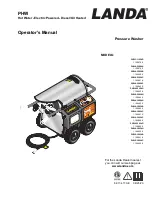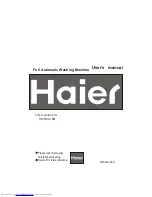
4
310979
WARNING
INSTRUCTIONS
EQUIPMENT MISUSE HAZARD
Misuse can cause death or serious injury.
D
Do not exceed the maximum working pressure or temperature rating of the lowest rated system
component. See
Technical Data
in all equipment manuals.
D
Use fluids and solvents that are compatible with equipment wetted parts. See
Technical Data
in all
equipment manuals. Read fluid and solvent manufacturer’s warnings.
D
Check equipment daily. Repair or replace worn or damaged parts immediately.
D
Do not alter or modify equipment.
D
Use equipment only for its intended purpose. Call your ASM distributor for information.
D
Route hoses and cables away from traffic areas, sharp edges, moving parts and hot surfaces.
D
Do not kink or overbend hoses or use hoses to pull equipment.
D
Keep children and animals away from work area.
D
Comply with all applicable safety regulations.
PRESSURIZED ALUMINUM PARTS HAZARD
Do not use 1,1,1-trichloroethane, methylene chloride, other halogenated hydrocarbon solvents or
fluids containing such solvents in this equipment. Such use could result in a serious chemical reaction,
with the possibility of explosion, which could cause death, serious injury and/or substantial property
damage.
MOVING PARTS HAZARD
Moving parts can pinch or amputate fingers and other body parts.
D
Keep clear of moving parts.
D
Do not operate equipment with protective guards or covers removed.
D
Pressurized equipment can start without warning. Before checking, moving, or servicing
equipment, follow the
Pressure Relief Procedure
in this manual. Disconnect power or air supply.
TOXIC FLUID OR FUMES HAZARD
Toxic fluid or fumes can cause serious injury or death if splashed in the eyes or on skin, inhaled,
or swallowed.
D
Read MSDS’s to know the specific hazards of the fluids you are using.
D
Store hazardous fluid in approved containers and dispose of it according to all applicable
guidelines.
BURN HAZARD
Equipment surfaces and fluid that’s heated can become very hot during operation. To avoid severe
burns, do not touch hot fluid or equipment. Wait until equipment/fluid has cooled completely.
PERSONAL PROTECTIVE EQUIPMENT
You must wear appropriate protective equipment when operating, servicing, or when in the operating
area of the equipment to help protect you from serious injury, including eye injury, inhalation of toxic
fumes, burns, and hearing loss. This equipment includes, but is not limited to:
D
Protective eye wear.
D
Clothing and respirator as recommended by the fluid and solvent manufacturer.
D
Gloves.
D
Hearing protection.





































